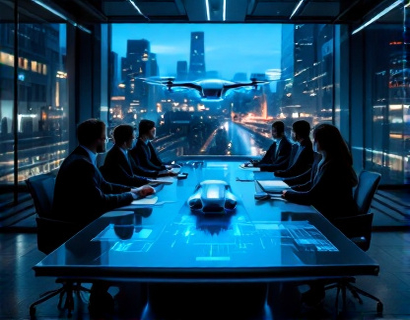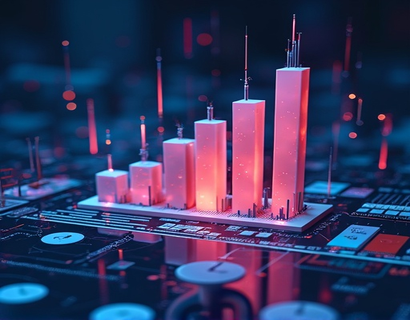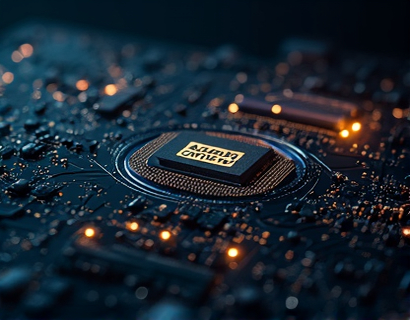Next-Gen Aerospace Innovations: Transforming Efficiency and Safety for Industry Leaders
The aerospace industry stands at the cusp of a revolutionary era, driven by rapid advancements in technology and a relentless pursuit of efficiency and safety. This article delves into the latest innovations reshaping aviation and space exploration, offering industry leaders and visionaries a comprehensive look at the future of aerospace engineering.
One of the most significant advancements in aerospace technology is the development of advanced materials. Composites, such as carbon fiber reinforced polymers, are increasingly replacing traditional metals in aircraft structures. These materials offer superior strength-to-weight ratios, reducing the overall weight of the aircraft and thereby improving fuel efficiency. For instance, the Boeing 787 Dreamliner and the Airbus A350 XWB incorporate extensive use of composites, leading to a 20% reduction in fuel consumption compared to similar aircraft.
Another critical area of innovation is in propulsion systems. Electric and hybrid-electric propulsion technologies are gaining traction, promising substantial reductions in emissions and operational costs. Companies like Rolls-Royce and Siemens are at the forefront of developing electric propulsion systems for regional aircraft. These systems utilize electric motors powered by batteries or fuel cells, offering quieter and more efficient flight operations. While still in the experimental phase, these technologies hold the potential to transform short-haul flights in the coming decades.
Autonomous systems are also revolutionizing the aerospace industry. Unmanned Aerial Vehicles (UAVs) or drones are becoming increasingly sophisticated, with applications ranging from cargo transport to surveillance and maintenance. Autonomous flight control systems, enhanced by artificial intelligence and machine learning, enable drones to navigate complex environments and perform tasks with minimal human intervention. For example, drones equipped with AI can autonomously inspect infrastructure, such as bridges and pipelines, reducing the need for costly and dangerous manual inspections.
In the realm of aviation, the integration of autonomous technologies is paving the way for the development of autonomous aircraft. Companies like Airbus and Boeing are exploring the concept of unmanned commercial aircraft, which could significantly reduce operational costs and enhance safety. Autonomous systems can continuously monitor and adjust flight parameters, reducing the risk of human error and improving overall flight efficiency. However, regulatory frameworks and public acceptance remain key challenges that need to be addressed before widespread adoption.
Safety is a paramount concern in aerospace, and advancements in sensor technology are playing a crucial role in enhancing it. Next-generation sensors, including lidar, radar, and optical sensors, provide real-time data on environmental conditions, aircraft health, and potential hazards. These sensors enable predictive maintenance, allowing for proactive repairs and reducing the likelihood of mechanical failures. For instance, lidar sensors can detect obstacles and terrain features with high precision, enhancing the safety of autonomous flight operations.
Data analytics and the Internet of Things (IoT) are also transforming the aerospace industry. The collection and analysis of vast amounts of data from various sources, such as sensors and flight records, enable operators to gain insights into performance trends and potential issues. Predictive analytics can forecast maintenance needs and optimize flight routes based on weather conditions and air traffic, leading to more efficient and safer operations. Airbus, for example, has implemented IoT solutions to monitor the health of its aircraft in real-time, reducing downtime and maintenance costs.
In space exploration, innovations are pushing the boundaries of what is possible. Reusable rockets, developed by companies like SpaceX, are revolutionizing launch costs and accessibility to space. The ability to land and reuse rocket boosters significantly reduces the expense of space missions, making space travel more feasible for both commercial and scientific endeavors. Reusable technology not only lowers costs but also enhances safety by allowing for thorough inspections and maintenance between flights.
Advanced propulsion systems for space travel are another area of intense research. Nuclear thermal propulsion and electric propulsion systems offer higher efficiency and greater thrust compared to traditional chemical rockets. These technologies have the potential to reduce travel times to distant planets and enable more ambitious missions, such as manned missions to Mars. NASA and other space agencies are actively exploring these options, with several experimental projects underway.
Human factors are also being addressed through innovations in spacecraft design. Next-generation spacecraft are being designed with ergonomics and crew well-being in mind. Advanced life support systems, improved radiation shielding, and enhanced living quarters are being developed to ensure the health and comfort of astronauts on long-duration missions. For example, the European Space Agency's (ESA) Habitable Modular Spacecraft (HMS) concept includes modular designs that can be customized for different mission requirements, improving the overall living experience for astronauts.
The integration of augmented reality (AR) and virtual reality (VR) technologies is transforming training and operations in the aerospace industry. AR and VR provide immersive training environments for pilots and technicians, allowing them to practice complex procedures in a safe and controlled setting. This not only enhances skill retention but also reduces the risks associated with traditional training methods. For instance, pilots can simulate emergency scenarios and learn how to respond effectively, improving their readiness for real-world situations.
Supply chain optimization is another critical area where technology is making a significant impact. Blockchain technology is being explored to enhance transparency and security in aerospace supply chains. By creating an immutable and traceable record of components and materials, blockchain can help prevent counterfeiting and ensure compliance with regulatory standards. This is particularly important in the aerospace industry, where the integrity of components is crucial for safety and performance.
Lastly, sustainability is becoming a driving force in aerospace innovation. The industry is under increasing pressure to reduce its environmental footprint, leading to the development of more eco-friendly technologies. Alternative fuels, such as sustainable aviation fuel (SAF), are being tested and adopted by airlines to reduce carbon emissions. Additionally, electric and hybrid aircraft are being developed to minimize environmental impact. These efforts align with global initiatives to combat climate change and promote sustainable development.
In conclusion, the aerospace industry is undergoing a transformative period, driven by advancements in materials, propulsion, autonomous systems, sensor technology, data analytics, and sustainability. These innovations are not only enhancing efficiency and safety but also opening up new possibilities for exploration and commercialization. Industry leaders must stay abreast of these developments to remain competitive and drive the future of aerospace engineering.










































